Are you looking to take your business to the next level? Partnering with the right company can create exciting opportunities for growth and innovation. In this article, we will explore effective strategies for crafting a compelling partnership proposal that resonates with potential collaborators. So, let's dive in and discover how to make your proposal stand out from the crowd!

Mutual Benefits and Value Proposition
A partnership proposal outlines prospective collaborations that create mutual benefits and value for companies involved. This document should include key elements such as specific goals (improving market reach, enhancing product offerings), detailed value propositions (complementary services, shared resources), and potential financial benefits (cost savings, increased revenue streams). Begin by identifying target companies (similar industry leaders, local businesses) that align with each other's strengths. Highlight successful case studies (prior partnerships, measurable outcomes) that demonstrate potential for collaboration. Address the anticipated roles of each partner while ensuring a clear understanding of commitment and expectations. Finally, conclude with a call to action (meeting proposals, further discussions) to foster engagement and set the stage for negotiation.
Unique Selling Points and Differentiators
A robust partnership proposal can greatly enhance collaboration opportunities between companies. Unique Selling Points (USPs) and differentiators should be clearly defined to demonstrate value. For instance, incorporating a sustainable production process might not only comply with global environmental standards but also attract eco-conscious consumers. Another example could be offering cutting-edge technology solutions, like Artificial Intelligence algorithms that enhance operational efficiency, promoting a competitive edge in the market. A strong focus on customer-centric services, such as personalized support or tailored product offerings, can further emphasize commitment to client satisfaction. Highlighting these key aspects will help establish a compelling case for partnership growth.
Clear Call to Action and Next Steps
A partnership proposal should include a clear call to action and define next steps to facilitate collaboration. Consider creating a compelling message that highlights mutual benefits, such as increased market reach or enhanced service offerings. Specify the desired outcome, encouraging the recipient to engage in discussions or meetings. Clearly outline potential dates for a follow-up conversation or presentation, providing contact information for easy communication. Finally, emphasize the importance of timely responses to capitalize on opportunities efficiently.
Contact Information and Accessibility
Contact information is essential for establishing effective communication in a partnership proposal. Including crucial details, such as business name, address, phone number, and email address, ensures accessibility for potential partners. Additionally, providing designated contact persons enhances clarity and facilitates prompt responses. Transparency in contact methods fosters trust and encourages a proactive approach to address inquiries and concerns. Leveraging multiple platforms, including social media handles, can further broaden accessibility and engagement opportunities, making it easier for interested companies to reach out and collaborate.
Personalization and Recipient's Interests
Crafting a partnership proposal requires understanding the recipient's interests and personalizing the message for maximum impact. Research about the company's values, goals, and past collaborations can guide the content. Mention specific projects and successes that align with those interests. Highlight how both parties can benefit from a mutual partnership, possibly through joint marketing initiatives or co-branding efforts in strategic market segments. Tailor the tone to the company's culture, whether formal or creative, and ensure to articulate clear outcomes and value propositions appealing to the recipient's business objectives.
Letter Template For Partnership Proposal To Companies Samples
Letter template of Strategic Partnership Proposal for Collaboration with Companies
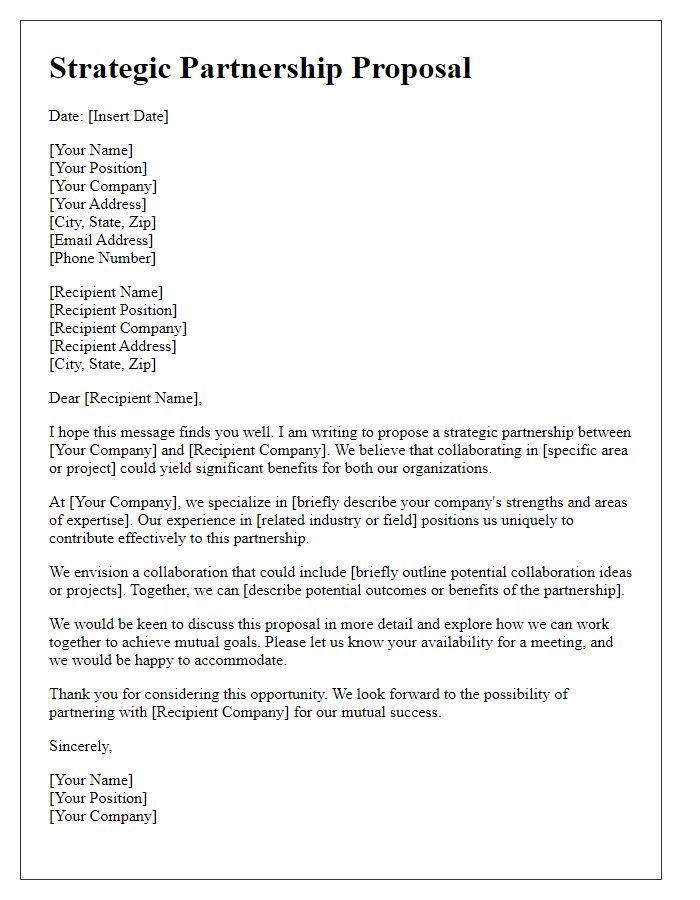
Letter template of Collaborative Proposal for Innovation and Development
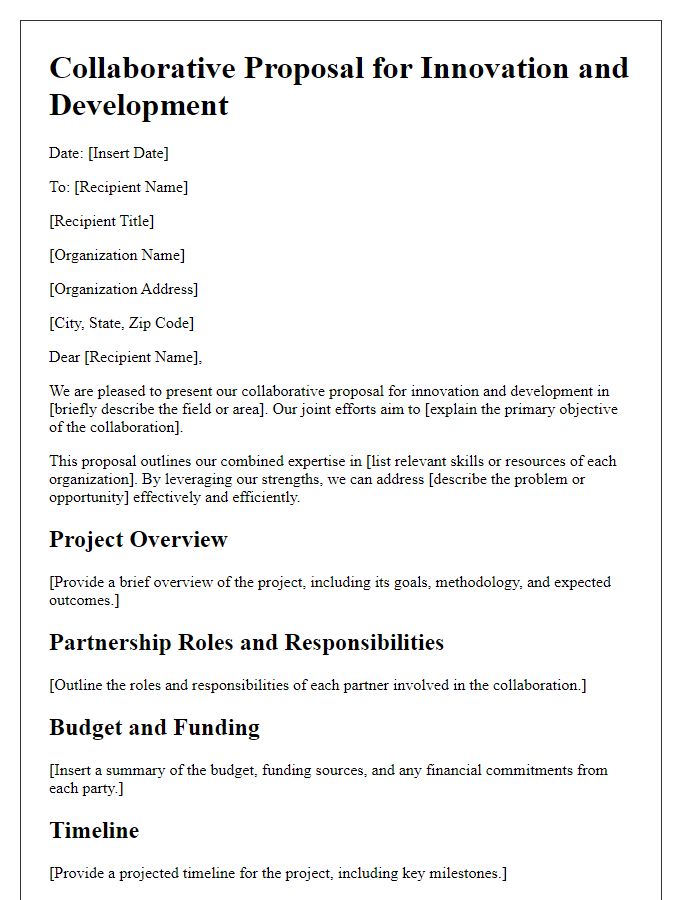
Letter template of Service Partnership Proposal for Improved Customer Experience
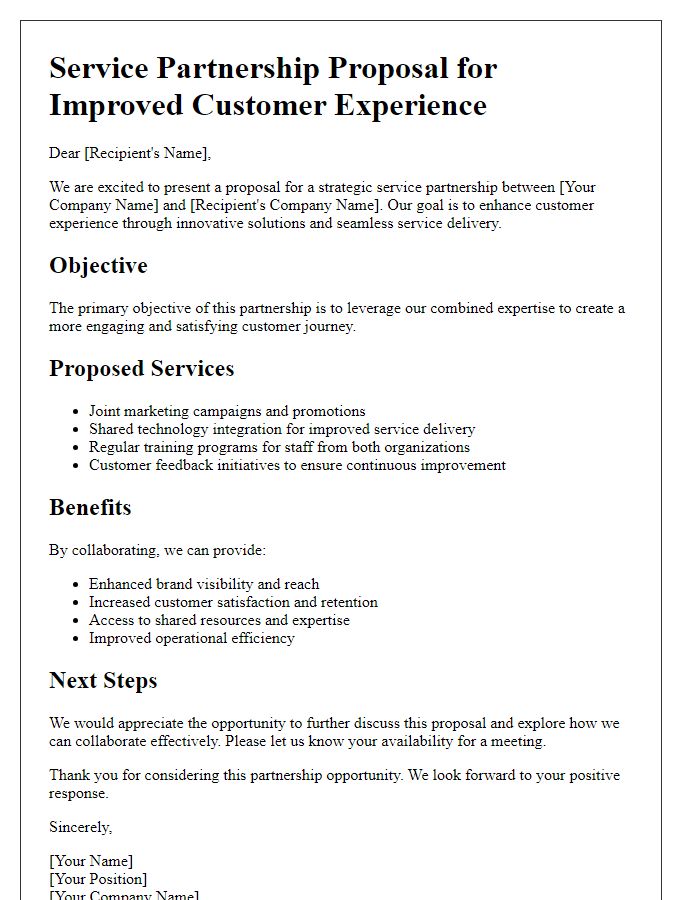

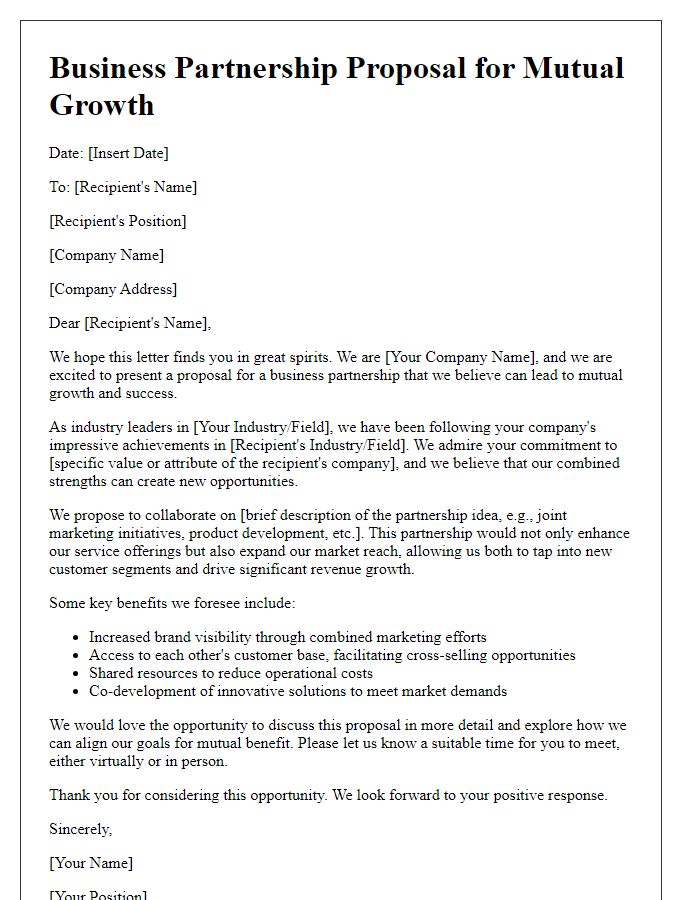
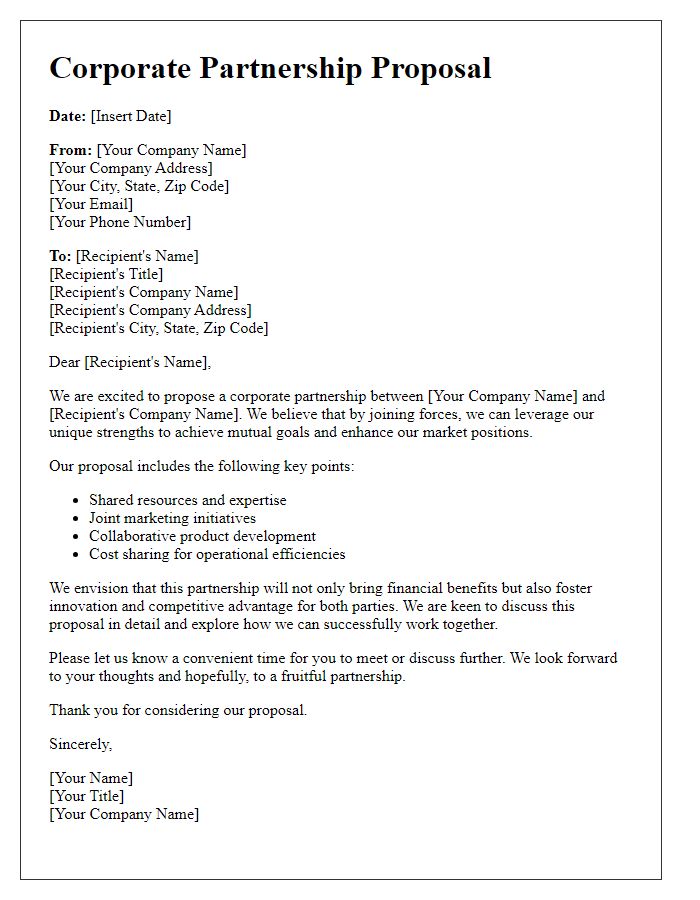
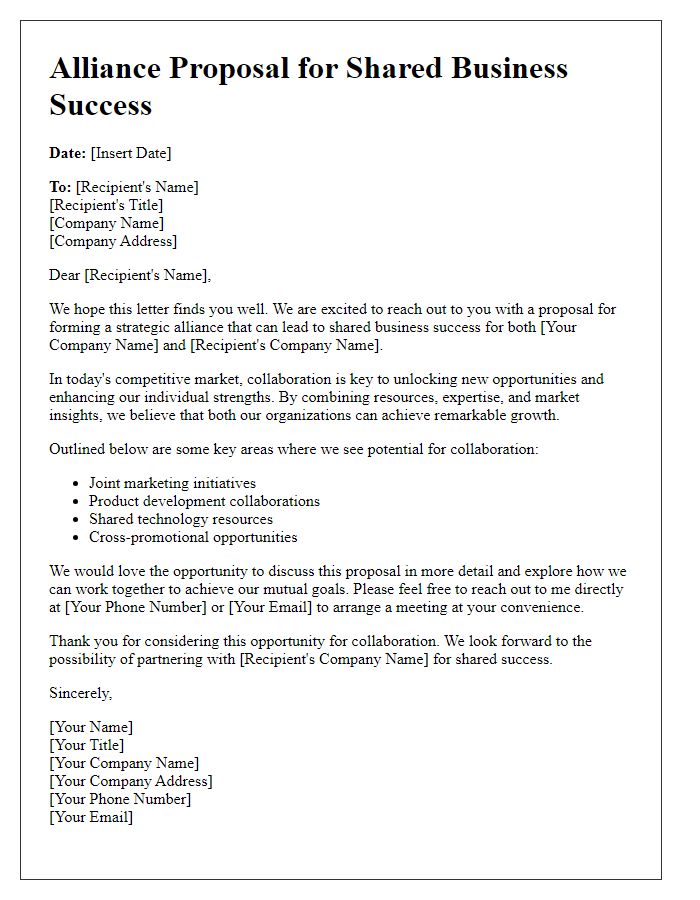
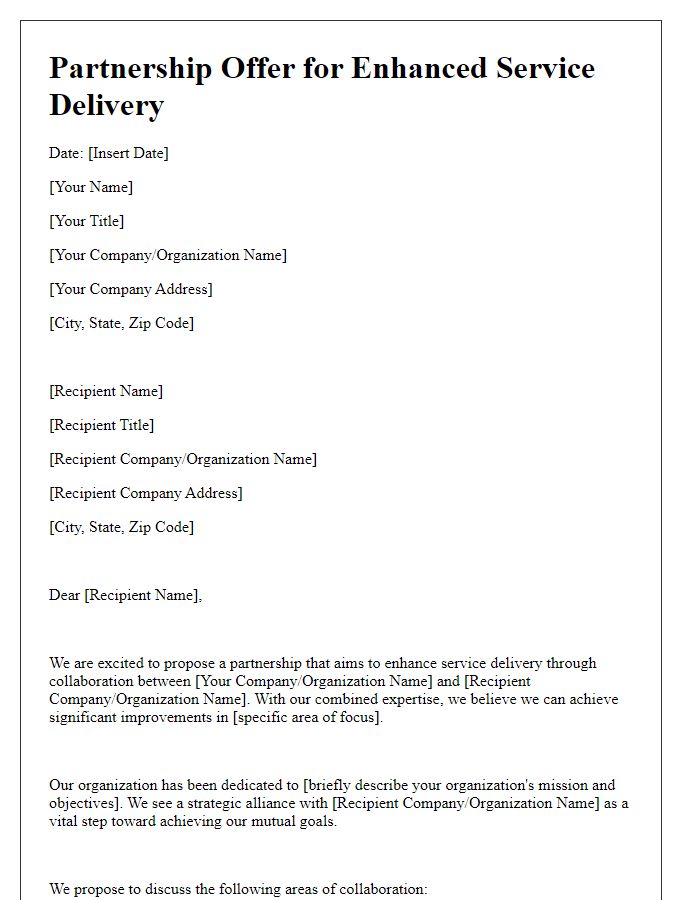
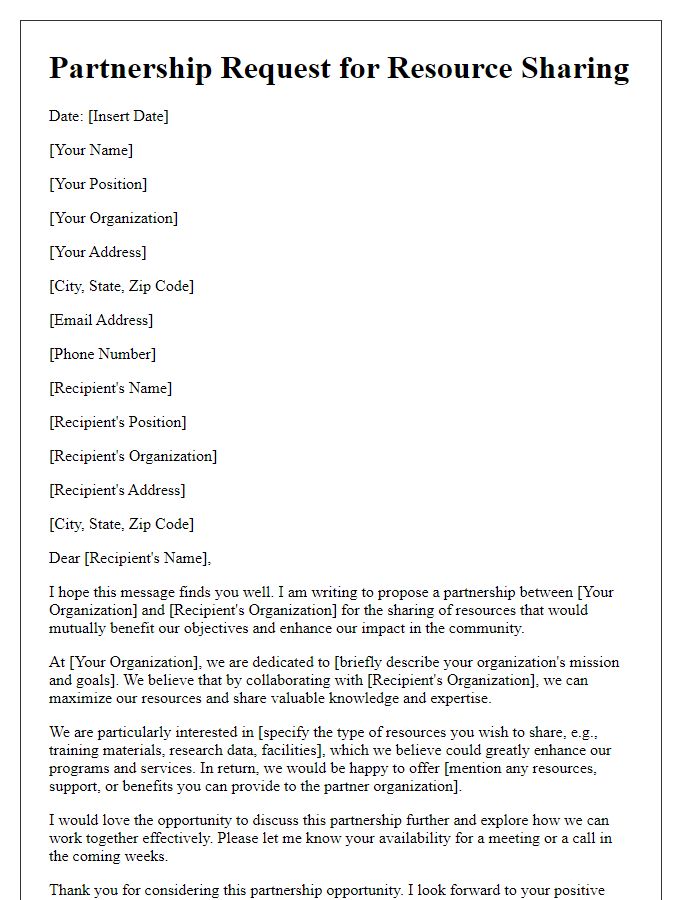
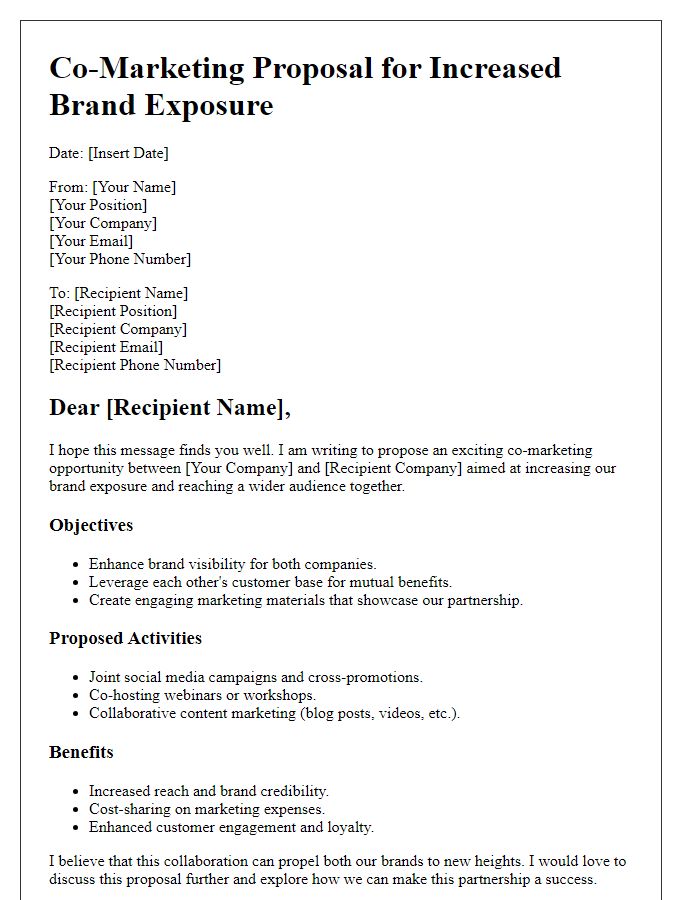
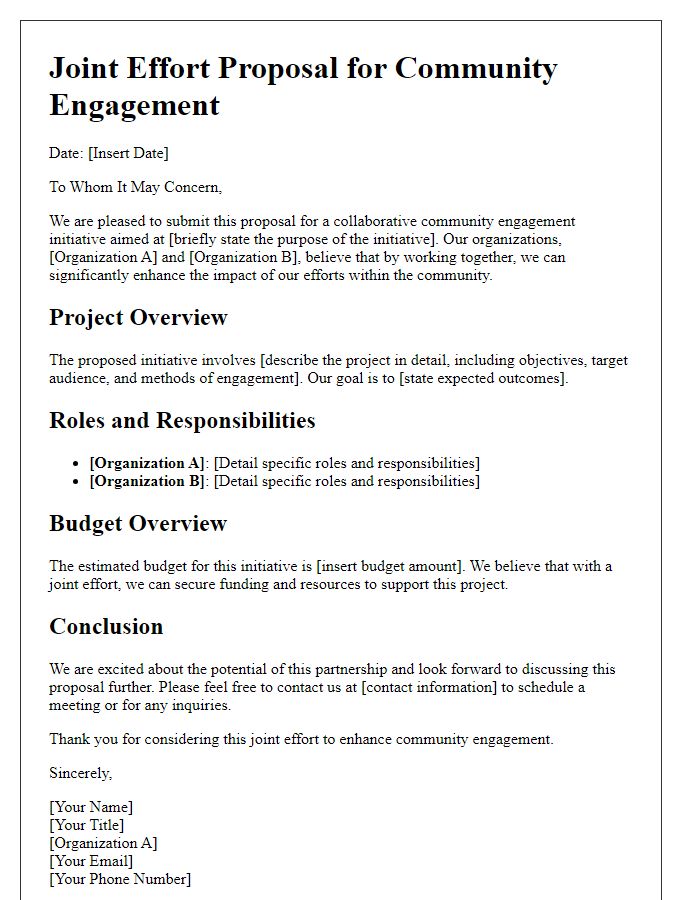


Comments